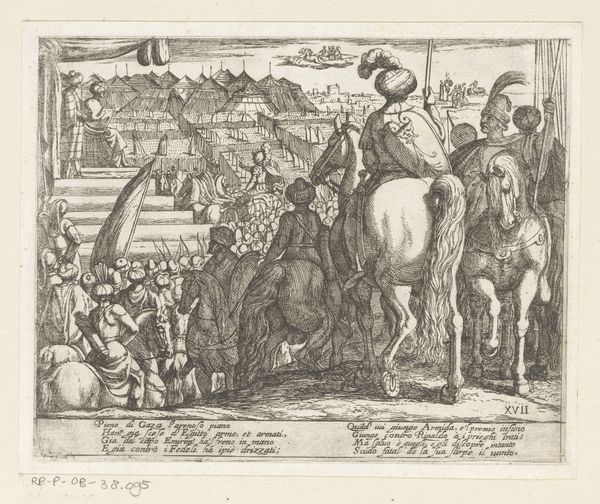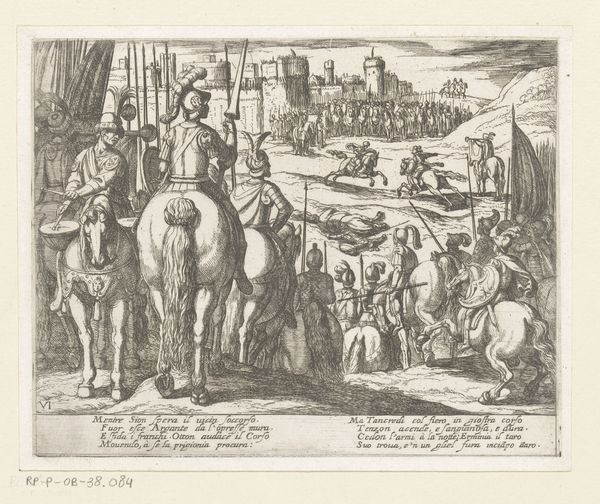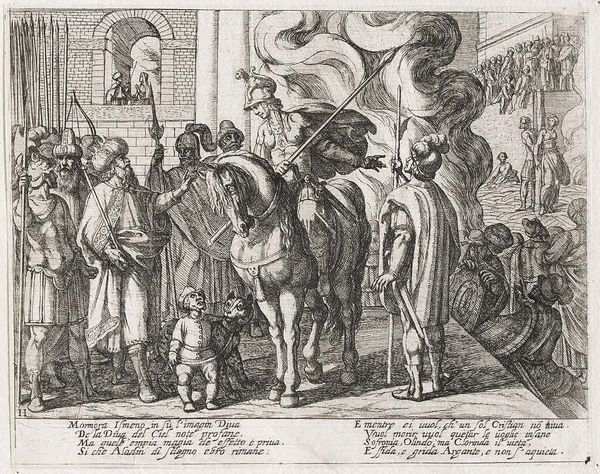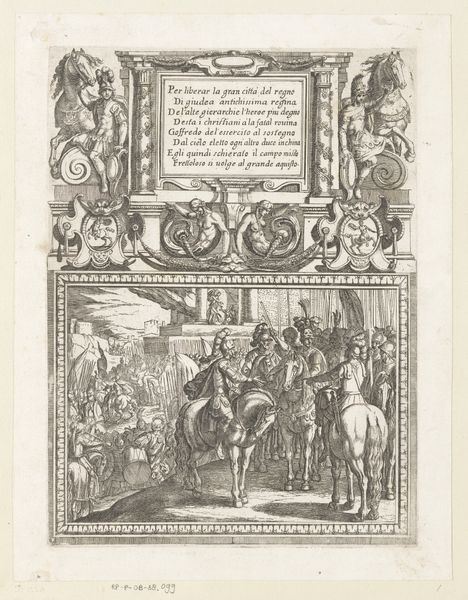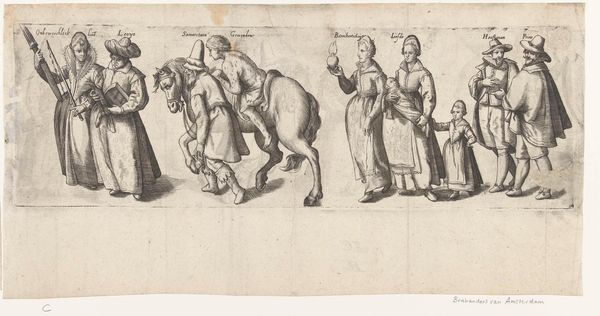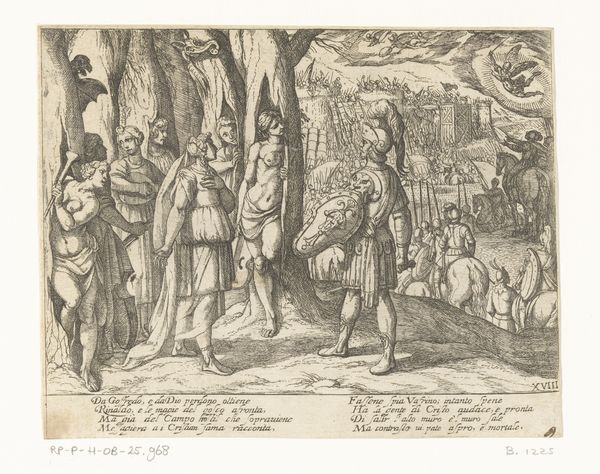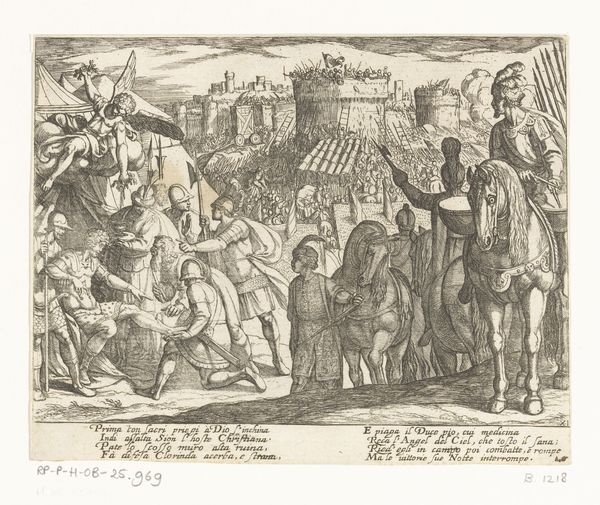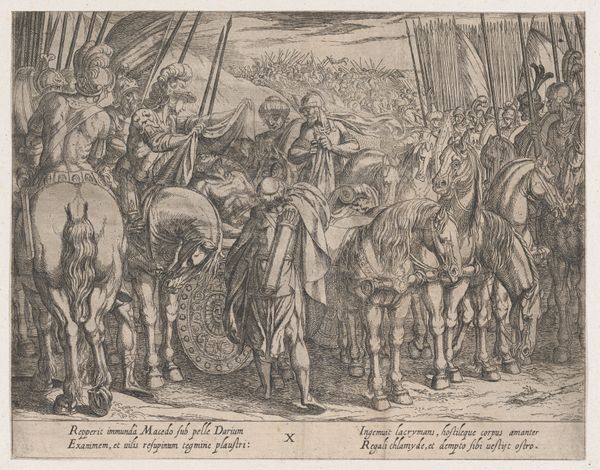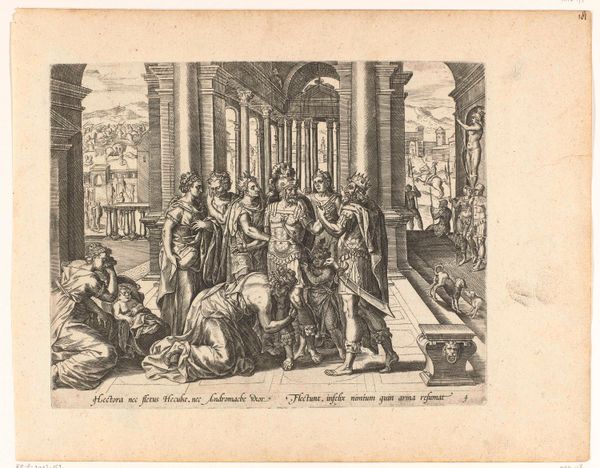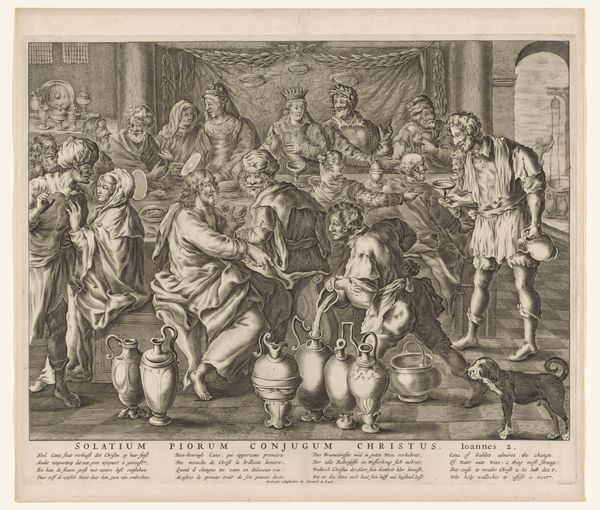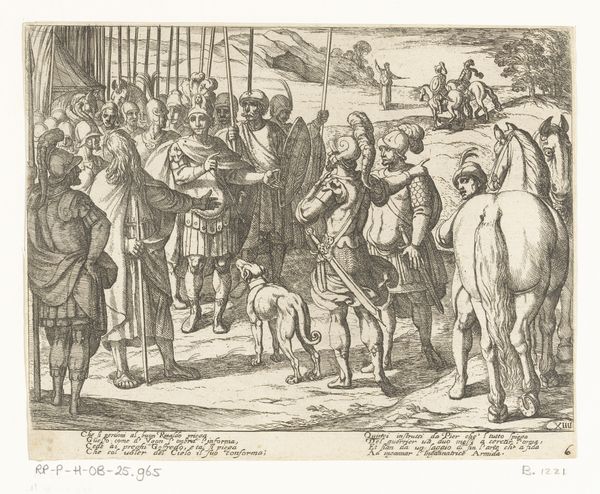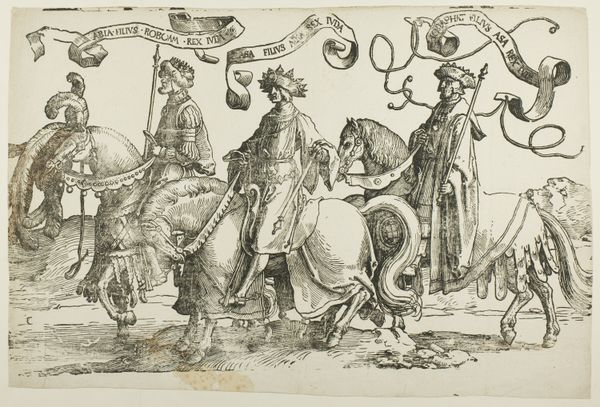
Illustratie bij Canto II van Tasso's 'Gerusalemme Liberata' 1565 - 1630
0:00
0:00
antoniotempesta
Rijksmuseum
print, engraving
#
narrative-art
# print
#
pen illustration
#
pen sketch
#
figuration
#
history-painting
#
italian-renaissance
#
engraving
Dimensions: height 145 mm, width 183 mm
Copyright: Rijks Museum: Open Domain
Curator: Before us we have Antonio Tempesta’s "Illustration to Canto II of Tasso's 'Gerusalemme Liberata,'" an engraving dating roughly between 1565 and 1630. It’s held here at the Rijksmuseum. Editor: It's captivating, but overwhelmingly busy. The composition feels chaotic, the figures crowded and almost blurring into one another. The stark contrast between light and shadow, achieved with such delicate lines, contributes to an air of tension and perhaps a bit of unrest. Curator: Absolutely. The work illustrates a scene from Tasso's epic poem, specifically Canto II. The narrative centers around the siege of Jerusalem during the First Crusade. What’s fascinating here is how Tempesta translates Tasso’s rich allegory of clashing faiths and cultural ideals into visual form. The symbolic language he employs – the attire of the figures, their gestures, even the architecture - communicates layers of meaning beyond just the literal events. Editor: The details in the figures' clothing really speak to that. There's a deliberate choice of costume which, in addition to giving us a sense of the characters, really heightens the tension and adds texture. Also, observe how the lines vary in thickness and density across the composition. The effect suggests volume and form where line alone might fall flat. Curator: Yes, and the repetition of particular figures like the characters elevated on horseback reinforces hierarchical positions and draws attention to pivotal moments in the narrative. And for contemporary viewers, works such as this carried immense psychological weight. These stories were more than entertainment; they served as mirrors reflecting societal values and anxieties surrounding religious conflict and political power. It’s intriguing to decode what such images might reveal about the era’s cultural memory and aspirations. Editor: It strikes me how Tempesta really understands the possibilities and restrictions of printmaking. Every line, every mark, contributes to the whole image without any wasted effort or space. I’m particularly impressed by the suggestion of depth. The whole thing buzzes with action and tension and a strong directional flow that the viewer’s eye just latches onto. Curator: Indeed, engaging with this work encourages us to consider art not only as an aesthetic object but as a cultural artifact with a complex history. Editor: An intricate and dramatic engraving, demanding close observation to decipher the myriad nuances that Tempesta skillfully brings into play.
Comments
No comments
Be the first to comment and join the conversation on the ultimate creative platform.
